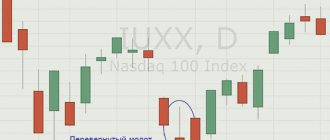Today, the problem of criminal money circulation is quite acute both at the regional level and at the global level – between countries. Various international organizations are involved in the fight against these illegal operations. In the article we will take a closer look at the activities of the FATF - this is a group for developing financial measures to combat money laundering. Its importance is difficult to overestimate, since it does its best to combat the financing of criminal groups and terrorism throughout the world.
What it is
According to the general definition, the FATF is an international organization engaged in preparing global standards in the field of combating money laundering and the financial support of terrorist organizations. In addition, the FATF is committed to assessing national systems for compliance with established international standards. The main tools in the activities of the organization described are considered to be forty recommendations in the field of AML/CFT, which are carefully audited (approximately every five years). The president of the FATF group is Santiago Otamendi.
Regulation and decentralization
KYC, AML and other procedures developed by regulators make it more difficult for organized crime and terrorists to engage in illegal activities by preventing them from converting ill-gotten proceeds into legitimate proceeds. And today, the cryptocurrency and traditional financial systems are finding more and more common ground. Some adherents of blockchain and cryptocurrencies believe that verification of users of crypto-services and the concentration of their data on the side of crypto-platforms violates the principle of anonymity and decentralization. Perhaps this is partly true. It should be noted that this is the price we pay for security and the opportunity to use the entire arsenal of financial instruments of the cryptocurrency and fiat financial systems. With the rapid expansion of the crypto market, a variety of new financial services at the intersection of two systems, without the introduction of AML procedures, full access to a variety of fiat resources is impossible. As a result, the client receives security and a wide range of financial instruments that ensure profitable transactions.
Structure and activities
The FATF Group constantly holds plenary meetings at least three times a year, at which certain decisions are made. Also a tool of this institute are its working groups:
- by typologies;
- on assessment and implementation;
- to combat the financing of terrorist organizations;
- on the study of international cooperation.
The FATF is also an organization that actively interacts with the World Bank, the International Monetary Fund and the UN Office on Crime and Drug Trafficking. All these structures develop and implement programs to combat money laundering and investment in criminal activities.
One of the most important tools of the FATF's activities are several financial intelligence units (or FIUs for short), which are responsible for collecting and studying financial information within one country in order to search for and identify illegal money “migrations”.
Background
AML is an acronym that can be translated as Anti-Money Laundry - anti-money laundering. This activity is fully designated in a longer way: anti-money laundering and counter-terrorist financing and counter-weapons of mass destruction financing (countering money laundering, countering the financing of terrorism and financing the creation of weapons of mass destruction). This formulation appeared in 1989 in Paris following the creation of the international non-governmental organization The Financial Action Task Force (FATF).
The concept of KYC (Know Your Client/Customer) - Know Your Client, as official, appeared much later, in 2016 in the USA. The Treasury Department's Financial Crimes Enforcement Network (FinCEN) has introduced KYC requirements, although the acronym had previously been used in business parlance.
AML is a broader concept and includes KYC. Often these concepts are confused and they, indeed, go hand in hand, but there is no equal sign between them, let's look at them in more detail.
KYC requirements are part of the anti-money laundering (AML) package. The complexity of the procedure may vary, but in general terms the required data that AML officers will want to see is as follows:
- FULL NAME.
- Date of Birth.
- E-mail address.
- Phone number.
- Residence address.
- ID (passport, license).
Most of the data will have to be confirmed one way or another using photos or scans of documents, selfies with them, and phone number verification via SMS. In some cases, remote or even face-to-face interviews are conducted. Verification procedures may vary depending on various factors. But all actions are aimed at the same goal - collecting and verifying client data. This also includes due diligence and continuous monitoring.
So, KYC is part of AML activities, which consists of verification of personal data and, possibly, enhanced due diligence.
AML, on the other hand, consists of a much broader list of measures to combat financial crimes. AML, for example, also includes auditing software and documentation. That is, in addition to establishing the client’s status, AML determines the legitimacy of the circulation of financial funds - they should not be obtained by criminal means and cannot be spent on illegal acts.
Anti-money laundering policy includes a broader set of measures than KYC, for example for cryptocurrencies:
- Transaction monitoring.
- Checking cryptocurrency for purity.
- Comprehensive risk assessment.
- Checking sources of income and wallets or accounts receiving funds, and so on.
The following are considered part of the general AML policy:
- CDD - Customer Due Diligence.
- EDD - Enhanced Due Diligence (extended customer verification).
- KYCC - Know Your Customer's Customer (know your customer's customer).
FATF membership
More than 35 states are members of the world-famous FATF Group. The participating countries are as follows: Australia, New Zealand, countries of Asia and Europe, the USA, Mexico, Brazil, Argentina, South Africa, and the Russian Federation. The latter joined the FATF in June 2003. In addition to countries, this includes two international organizations: the Gulf Cooperation Council and the European Commission.
It is noteworthy that it was on Russia’s initiative that in 2004 the Federal Financial Monitoring Service took part in the activities of the FATF on behalf of the Russian Federation.
Features of recommendations
The documents of the international institute contain materials, namely a set of organizational and legal measures that must be taken in each country to create an effective regime to combat money laundering and the financing of terrorism. Such features of measures as universality and complexity are expressed in the following:
- the widest possible coverage of issues related to combating money laundering;
- relationship with other international conventions, acts of specialized international organizations involved in AML/CFT, resolutions of the UN Security Council, etc.;
- providing countries with the opportunity to pursue flexible policies in addressing these issues, taking into account national characteristics and the specifics of the legal system.
All FATF recommendations in no way replace or duplicate similar resolutions of other organizations. On the contrary, they bring principles together, playing a very important role in the codification of AML/CFT rules and regulations. According to one of the Security Council resolutions, forty FATF recommendations are considered mandatory for implementation by all UN member countries without exception.
Don't miss the red flags // FATF on guard of virtual assets
Introduction
The Financial Action Task Force ( FATF ) was created more than 30 years ago. During this time, it has become one of the key international players involved in combating money laundering. In this regard, this international organization is known to many thanks to the reports, recommendations, guidelines and standards that have been developed, which are followed by many states, including the Russian Federation. In September 2022, the FATF released a report on red flag categories for the use of virtual assets/cryptocurrencies for money laundering and terrorist financing ( Report )[1]. It should be viewed as a useful reference for businesses and compliance officials, as well as financial intermediaries involved in the cryptocurrency market.
Considering that the Supreme Court of the Russian Federation last year recognized the possibility of using cryptocurrency to launder criminal proceeds, documents such as the FATF Report should not pass our attention. Moreover, the policy of the Russian Federation as a member of this international organization in the field of combating money laundering and terrorist financing corresponds to the FATF acts. In this regard, the Report allows us to be proactive and adapt to future national regulation of virtual assets.
In this post, I will try to help businesses and highlight red flag indicators from the Report that should be put into practice to reduce the risk of being drawn into unwanted business relationships.
FATF acts on regulation of transactions with virtual assets
The FATF Recommendations on Combating Money Laundering, the Financing of Terrorism and the Financing of Proliferation of Weapons of Mass Destruction in 2012[2] included a clause dedicated to the control and mitigation of risks due to the emergence of new technologies. The term “use of new technologies” was specified in subsequent documents of the Group.
FATF report “Virtual currencies - key definitions and risks in the field of combating money laundering and terrorist financing” (2014);
FATF Guidance on Virtual Currencies (2015);
Amendments to FATF Standards and the FATF Statement on Virtual Assets (2018).
In addition, the FATF prepared a confidential Report that focuses on financial investigations into the use of virtual assets for money laundering and terrorist financing (2019).
Thus, the Report under study became a continuation of the FATF’s activities to study new technologies, in particular virtual assets, and analyze the risks of their use.
Contents of the Report
The provisions and conclusions of the Report are based on the studied practice of Member States over the past four years. When compiling the Report, its developers aimed to improve the identification of suspicious business activity. The contents of the document are divided into six parts, each of which is devoted to specific categories of danger signals:
- in connection with operations;
- in connection with the manner in which transactions are carried out;
- due to anonymity;
- in connection with payers and recipients;
- in connection with sources of financing and origin of wealth;
- due to geographical risks.
Danger signals
Each signal individually does not raise serious doubts, but taken together, the red flags indicate the potential for illegal use of virtual assets ( VA ). Moreover, there must be no logical and consistent explanation for the presence of these signals. Based on the analysis of the Report, it is possible to identify general danger signals, as well as those directly related to VA.
By general red flags we mean those that affect transactions with any property, not just VA. In other words, they do not have the specificity that arises from the use of new technologies. Although they are not the subject of our consideration, we will identify a few to give an idea of them:
1. Interaction with persons suspected of committing illegal activities, or carrying out transactions with property in relation to which there are suspicions of its illegal acquisition;
2. The size and frequency of transactions does not have a logical and consistent explanation from a business perspective;
3. Interaction with counterparties from jurisdictions with poorly developed legislation in the field of combating money laundering and terrorist financing, or with those who can be designated as high risk;
4. Use of many different calculation instruments;
5. Carrying out obviously unprofitable transactions;
6. Providing incomplete, unreliable or fake information about the counterparty, transaction, etc.;
7. The counterparty is associated with illegal activities or is known to law enforcement agencies in this regard.
In turn, if we return to the subject of our consideration, we can highlight the following signals that indicate dishonesty when using VA:
1. Transactions that involve multiple suppliers/virtual asset service providers ( VASPs ), especially if they are located in different countries;
2. Transactions with VA on the stock exchange without a logical and consistent explanation. For example, immediate withdrawal of assets without additional operations or as soon as possible after they appear on the account;
3. Making large deposits to interact with VASPs if there is information about the impossibility of acquiring a certain amount of VA due to welfare;
4. Use of the entire volume of VA in operations or for their withdrawal;
5. Possession of several accounts or virtual machines for transactions with assets without business necessity;
6. Performing multiple operations by several persons from one IP address;
7. Accumulation of a large volume of assets on one wallet using various non-interconnected online wallets, including when these funds are completely exchanged for fiat currency;
8. Use of VA with increased anonymity. For example, exchanging Bitcoin, which is public and transparent, for privacy coins;
9. Interaction with unregistered or unlicensed VASPs, dubious exchanges or those who do not follow the know-your-customer ( KYC ) principle, as well as the use of one-time exchange platforms;
10. Using shifting, shuffling, proxies or DNS to hide names, ransomware, undocumented devices, change IP addresses, frequently change identity information and other techniques to carry out illegal activities;
11. Affiliation with the darknet, dubious or gambling sites, extortion programs or fraudulent schemes, unreliable IP addresses, etc.;
12. Use of language, symbols or codes indicating transactions in support of or in connection with illegal activities;
13. Counterparties interact with jurisdictions where there are legislative gaps that allow the use of VA in illegal activities. For example, the jurisdiction has minimum requirements for the transparency of VASPs, the FAFT recommendations are not followed, or the KYC requirements do not correspond to generally accepted ones.
Conclusion
Several years ago, VAs quickly burst into our lives and began to be used, including for illegal activities. In this regard, the FATF has already developed several advisory acts to reduce the potential risks of using VA for money laundering and terrorist financing. The report is one such FATF document.
It focuses on red flags that indicate the possible use of VA for money laundering and terrorist financing. Such signals include the use of several virtual machines and accounts, interaction with unregistered or unlicensed VASPs, performing an operation with instant withdrawal of VA, the use of various techniques to hide illegal activities, etc. At the same time, a set of danger signals is needed in the absence of a reasonable and consistent explanation in order to talk about the potential illegal activity of a participant in the turnover.
Under the influence of the Central Bank and Rosfinmonitoring, you and I will have to comply with the FATF rules, otherwise Russia may be included in a special blacklist of opaque jurisdictions.
[1] FATF (2020), Money Laundering and Terrorist Financing Red Flag Indicators Associated with Virtual Assets, FATF, Paris, France, www.fatf-gafi.org/publications/fatfrecommendations/documents/Virtual-Assets-Red-Flag-Indicators .html
[2] FATF (2012-2019), International Standards on Combating Money Laundering and the Financing of Terrorism & Proliferation, FATF, Paris, France, www.fatf-gafi.org/recommendations.html
How were they developed
The original forty recommendations came about in 1990 when it was necessary to develop regulations and protect financial systems from criminals who laundered drug money. Later, six years later, the FATF standards were revised due to changes in technology, new trends and ways to launder money.
In October 2001, the FATF included in its mandate first eight, and then nine, special recommendations regarding the fight against terrorist financing.
The group's standards were revised for the second time in 2003 and were recognized in one hundred and eighty countries. At the moment, they are considered the international standard for combating illegal money laundering and the financing of terrorist organizations.
The whole truth about FATF!
In 1989, the Financial Action Task Force (FATF) was created by the ministers of the organization's member jurisdictions. The primary purpose of the FATF was, and continues to be, to set standards and promote the effective implementation of legal, regulatory and operational measures to combat money laundering, terrorist financing and other threats to the integrity of the international financial system.
To achieve its goals, the FATF has developed a series of Recommendations that are now considered international standards in the fight against money laundering, the financing of terrorism and the proliferation of weapons of mass destruction. These standards help countries be responsible for the integrity of the global financial system and help ensure equality in all countries. The Recommendations were first issued in 1990, just after the start of the fight against offshore jurisdictions.
You can find out about this at InternationalWealth.info:
General deoffshorization!
In addition to creating Recommendations, the FATF also monitors the progress of the implementation of the necessary measures, reviews techniques to prevent the process of money laundering and terrorist financing, and ensures the adaptation and implementation of relevant measures on a global scale.
Currently, the FATF consists of 34 jurisdictions and 2 regional organizations, which represent most of the major financial centers in all parts of the globe.
| Argentina | European Commission | India | New Zealand |
| Australia | Finland | Ireland | Norway |
| Austria | France | Italy | Portugal |
| Belgium | Germany | Japan | Russia |
| Brazil | Greece | The Republic of Korea | Singapore |
| Canada | Gulf Cooperation Council | Luxembourg | South Africa |
| China | Hong Kong, China | Mexico | Spain |
| Denmark | Iceland | Netherlands | Sweden |
| Switzerland | Türkiye | Great Britain | USA |
Currently, there are 49 Recommendations developed by the FATF to combat
with money laundering and terrorist financing. All 49 Recommendations must be followed by all 34 member countries and 2 regional organizations in order to strengthen their strength in the fight against the “world evil”. But, as you may have guessed, there are Recommendations, but following them is not so easy and smooth. After all, it is practically unattainable for all countries to comply with international standards at the same level. So in table No. 1 Scope of implementation of the FATF Recommendations, the number of standards that a FATF member country complies with is clearly monitored. Each jurisdiction was tested in a specific year, which is also indicated in the table.
Table No. 1. Scope of implementation of the FATF Recommendations
However, it was not this set of data that caused the greatest indignation, but the fact that the countries were divided into certain groups, which were already popularly divided into color categories - black, dark gray and gray list of countries.
Of course, the FATF rejects this kind of interpretation, but countries are still divided into three groups. The fact is that the FATF every year inspects and evaluates each jurisdiction for compliance and implementation of the Recommendations. The assessment is made on the basis of legislation and actual actions of the jurisdiction taken as part of the fight against the assigned tasks. It is these indicators that ultimately create the overall assessment of the country. Also, the International Co-operation Review Group (ICRG) reviews FATF studies three times a year (February, June and October) and publishes the results in two documents:
1. This is a publicly available FATF report that identifies jurisdictions with the highest risk levels due to their negative cooperation. These jurisdictions are further divided into two further categories:
- A. Countries that have strategic deficiencies in dealing with the threats posed. The FATF recommends that all member countries and the rest of the world implement countermeasures to protect the international financial system from the risks of money laundering and terrorist financing. These are the countries that are on the so-called FATF “black list”. As part of the latest report, which was released this fall, these are Iran and the Democratic People's Republic of Korea (DPRK).
- B. The second category includes countries that, similar to the first, have strategic deficiencies in combating the threats posed, and have not made sufficient progress in eliminating the deficiencies or are not implementing the action plan developed jointly with the FATF to eliminate the deficiencies. This list of countries is called “dark gray”, as you understand, these are those countries that are on the edge. The list of countries includes such jurisdictions of the world as Algeria, Ecuador, Ethiopia, Indonesia, Kenya, Myanmar, Pakistan, Syria, Tanzania, Turkey, Yemen.
A country falling into the above categories cannot bode well. Firstly, the country’s image drops to the lowest level, and secondly, there is a threat of financial sanctions being applied to these countries by the international community for failure to comply with the FATF Recommendations.
Offshore company Free consultation
information from a specialist about taxes and possible tax benefits of the jurisdiction suitable for the company structure.
information from a specialist about taxes and possible tax benefits of the jurisdiction suitable for the company structure.
We will contact you within 10 minutes
We will contact you within 10 minutes
2. Finally, the second document is the Improving Global AML/CFT Compliance: On-going Process.
This is a list of countries that are struggling with their problems and trying to implement the FATF Recommendations, despite the fact that these countries still have strategic deficiencies. The fact is that the FATF is aware of the complexity of its goals, but if a country, or rather its government, demonstrates its militant attitude to eliminate shortcomings by implementing the action plan developed by the FATF, then the country will certainly end up on the second document - the “gray” list.
If a country is included in the so-called “gray” list, this means that half the battle is done. More precisely, the FATF will no longer take such radical measures to force states to implement the 49 Recommendations, as may be the case with the “dark gray and black” lists. However, this does not mean that gray list countries will not be under close scrutiny from AML/CFT authorities.
As of the latest report, only Mongolia is on the gray list.
But, despite the lists that have been formed, as I described above, it is very difficult for all countries to comply with the requirements of the FATF Recommendations at the same level. In order for each country to strive for better results in achieving common goals - to combat money laundering and terrorist financing, the FATF, together with many countries, has developed an action plan to eliminate their shortcomings. There were 19 such countries: Afghanistan, Albania, Angola, Antigua and Barbuda, Argentina, Bangladesh, Cambodia, Cuba, Iraq, Kuwait, Kyrgyzstan, Lao PDR, Namibia, Nepal, Nicaragua, Sudan, Tajikistan, Vietnam, Zimbabwe. All of these countries do not implement the Recommendations to the required extent, but their governments have stated that they are ready to fight. The most interesting thing is that not a single classic offshore jurisdiction was included in the FATF lists, but this cannot mean that the deoffshorization process will somehow be suspended. Please keep your finger on the pulse and stay with us. If you have questions about creating a structure that will work in the era of deoffshorization, please contact us by email at [email protected] .
Subtypes of recommendations
The entire list of FATF (in particular standards) can be divided into several groups:
- coordination and policy regarding countering illicit money flows;
- money laundering and confiscation;
- financing of terrorist organizations;
- a number of preventive measures;
- transparent ownership and activities of legal entities;
- international cooperation;
- responsibilities and powers of relevant authorities and other measures.
Regional groups
In order to carefully monitor transnational money flows and transactions, and to suppress criminal activities in this regard, there are special regional groups similar to the FATF. They promote the dissemination of international standards throughout the world. Each group deals with its own specific region and studies the specifics of money circulation. In addition, mutual assessments of national financial systems are carried out for compliance with standards and research on current trends.
What are these groups? There are eight of them in the world: the Asia-Pacific group in South America, the Eurasian group in East and Southern Africa, the Middle East and North Africa group, the Committee of Experts of the European Council, the Caribbean and West Africa groups. Another one, on combating money laundering in Central Africa, has not yet received recognition and has not become part of a regional FATF-style group.
FATF: International Fight against Money Laundering
FATF is the Financial Action Task Force or FATF. The FATF creates international standards to combat money laundering and the financing of terrorist organizations. It also controls the legislation of the participating countries: it must be in accordance with the developed standards.
The group was established by the G7 countries during the Paris meeting in 1989. Today, the intergovernmental organization includes 35 states and 2 organizations. 20 organizations and one country act as observers. Russia has been a member of the FATF since January 19, 2003.
FATF 40 Recommendations
The main tool in the fight against criminal money laundering around the world is the 40 recommendations that FATF countries should take into account in their legislation. These recommendations are reviewed on average once every five years - at a special Plenary meeting.
FATF recommendations were first issued in 1990.
- The legislation of FATF states should treat money laundering as a criminal offence.
- To prove the guilt of those who laundered money, an objective analysis and the given facts are sufficient. Physical evidence is not required.
- According to the law, one of the penalties for this crime must be the confiscation of property that was obtained through money laundering and the elimination of the means of laundering.
- Banking secrecy is not a reason to ignore FATF recommendations.
- Banks and financial institutions are required by law to collect and store information about their customers.
- Banks and financial organizations should work especially carefully with officials, their relatives and loved ones.
- Banks should not cooperate with credit institutions that do not check their clients.
- Banks and financial institutions need to keep an eye on developments in technology that can enhance the anonymity of their customers.
- If a client who is convicted of money laundering is recruited by an intermediary, the financial institution that hired the intermediary will bear the penalty.
- Archives related to the client must be stored for at least five years from the time the client refused to cooperate with the financial organization.
- If a transaction looks suspicious, the bank has the right to receive from the client a written explanation of his actions and decisions.
- In addition to banks, casinos, real estate agencies, jewelry stores, lawyers, notaries, accountants and independent financial experts collect information about their clients.
- Banks must report to the government any suspicious transactions that occur through them.
- Banks are not responsible for disclosing information about a client who conducts suspicious transactions.
- All banks and financial organizations in the country must have their own programs and algorithms that prevent money laundering through them.
- Accountants, lawyers, notaries and auditors are required to report suspicious legal transactions. the people they work with.
- Laws must provide effective penalties for ignoring FATF recommendations.
- It is prohibited to create fictitious banks. Other banks are prohibited from conducting transactions with fictitious banks and organizations.
- Customs services control the physical movement of material assets abroad. Banks are required to report all international currency transactions that exceed the limits.
- The FATF recommendations apply to all areas of business.
- Banks and other financial institutions should be wary of dealing with countries that do not follow FATF recommendations.
- The FATF Recommendations apply to all branches and representative offices operating in any other country.
- Legislation must include measures that will prevent criminals from controlling financial and banking organizations.
- In the non-financial sphere, control over the implementation of FATF recommendations falls on the state and self-regulatory organizations.
- Anti-money laundering guidelines are required for every area of business.
- The establishment of a national anti-money laundering organization is recommended.
- Law enforcement agencies are given special powers to investigate crimes related to money laundering.
- They receive the right to demand any documents for the investigation.
- The supervisory authority is given the right to conduct inspections of any organizations suspected of laundering.
- The state provides national anti-money laundering organizations with all technical, financial, human and other resources.
- An organization that fights money laundering within a country must have close ties to the security forces of that country.
- Such an organization is required to keep records of the effectiveness of the measures it applies.
- The special body must have full access to information about the owners of all companies within the country.
- Legislation on trust management should be as open as possible.
- Countries are obliged to recognize the Vienna and Palermo UN Conventions: they regulate the fight against the financing of terrorism.
- We need to help other countries investigate money laundering crimes. Including providing the information and access necessary for this.
- The country needs help even if money laundering is not a crime there.
- A FATF member country must assist other countries in identifying, confiscating and freezing assets that may be associated with money laundering.
- Legislation should allow for the extradition of criminals involved in money laundering.
- It is necessary to help government organizations (domestic and foreign) exchange information and tools to combat money laundering.
Read also: Banking services: opening accounts for non-residents abroad and in Russia
FATF black and white lists
The FATF divides countries around the world into four groups, depending on the success of their measures to combat money laundering and the financing of terrorism.
- Group I
These are countries that fully implement the FATF recommendations - that is, almost all the states of the Group, including Russia.Full FATF list: Australia, Austria, Argentina, Belgium, Brazil, UK, Germany, Hong Kong, Greece, Denmark, India, Ireland, Iceland, Spain, Italy, Canada, China, Luxembourg, Malaysia, Mexico, Netherlands, New Zealand, Norway, Portugal, Russian Federation, Singapore, USA, Turkey, Finland, France, Switzerland, Sweden, South Africa, Republic of Korea, Japan.
- Group II
These are countries that lack the domestic resources to regulate money laundering. But they are taking possible measures.
On this list: Algeria, Angola, Cambodia, Namibia, Turkmenistan and other poor countries.
- Group III
Countries in this group have significant, strategically important gaps in the implementation of FATF recommendations. These include: Cuba, Bolivia, Pakistan, Syria, Türkiye.
- Group IV
This is a group that completely ignores the FATF recommendations and is in sanctions mode. This includes North Korea and Iran - they completely refuse to cooperate with the FATF.
The second, third and fourth groups are areas of risk for any business. All operations that take place under the jurisdiction of countries from these groups automatically fall under suspicion and raise questions. Many financial institutions simply refuse to make any payments to recipients from these countries.
The third and fourth groups are the blacklist. When it was created, most offshore countries in the Caribbean and other regions were included. However, in a short period of time, these states managed to put their legislation in order and now business on their territory is a much safer and calmer affair.
Black list
One of the activities of the described institute is the study of which countries and organizations do not implement the FATF recommendations. In other words, the so-called non-cooperative countries and territories are determined, a list of them is compiled, which is called “black”. The inclusion of a state in this list does not lead to the application of sanctions, but it indicates the degree of confidence in this country on the part of foreign investors.
Inclusion or removal from the blacklist is carried out at FATF meetings in accordance with the following criteria established in 2000:
- gaps in financial regulation - these may be transactions in payment systems without the necessary authorization;
- legislative obstacles, for example, the inability to identify the owner of the company;
- obstacles in international cooperation - this includes a ban on providing information about the company at the legislative level;
- inadequacy of measures to combat money laundering, for example, insufficient qualifications of personnel, corruption, etc.
According to global statistics and World Bank data on the shadow economy, more than ten trillion US dollars worth of goods and services are produced every year.
Financial sector
February 2013
The FATF Methodology for assessing technical compliance with the FATF Recommendations and the effectiveness of AML/CFT systems has been published .
In this publication, the FATF for the first time updated its approach to assessing the effectiveness of the compliance environment for transactions with digital assets (virtual assets) and the activities of a service provider in the field of digital assets (VASP, Virtual Asset Service Providers).
Please note that precise criteria for digital currencies and digital asset service providers were not presented in the document.
June 2014
The FATF has identified key terminology in the area of digital currencies and the potential risks of anti-money laundering and the financing of terrorism.
June 2015
The FATF has issued Guidance for a risk-based approach to virtual currencies , which defines payment products and services in the field of virtual currencies, and also outlines the FATF Recommendations that apply to organizations providing services for exchanging digital currencies.
October 2022
The FATF has amended the Recommendations to clarify the coverage of financial activities involving virtual assets. In addition, two new terms have been included in the FATF Glossary: “digital assets” and “digital asset service provider”.
The Guidelines require that digital asset service providers be subject to anti-money laundering and anti-terrorist financing regulation, licensing and registration, and be subject to effective compliance systems.
June 2022
FATF issued Guidance for a Risk-Based Approach to Virtual Assets and Virtual Asset Service Providers , or the so-called Travel Rule.
The main reason for the publication of this document is the FATF's concern about the increasing use of digital assets for criminal purposes due to their anonymity. The Guide also highlights that, in addition to the risks, cryptocurrencies have the potential to improve payment efficiency and reduce transaction costs.
The document applies to service providers in the field of digital assets, which include crypto exchanges, hedge funds, and service providers for transactions with cryptocurrencies. In accordance with the Guidelines, providers can also include individuals if they fall under the definition of service providers in the field of digital currencies: they conduct transactions with cryptocurrencies, are P2P traders, and so on.
The main innovations of the document include the following requirements:
- obtaining a license for service providers;
- exchange between VASP information about their clients (names, addresses, wallet numbers) during transactions between them from 1000 dollars or 1000 euros;
- the ability to track transactions, freeze them and refuse to carry them out;
- approval from the regulator when changing the ownership structure of the crypto business.
These changes should have been implemented before June 2020.
An Explanatory Note to Recommendation 15 was approved to clarify the FATF application requirements for virtual assets and digital asset service providers. In particular, this concerns the application of a risk-based approach to activities and operations related to digital assets, supervision or control of service providers in the field of digital assets; their licensing or registration; preventive measures, including customer due diligence, retention of records and documents, and reporting of suspicious transactions; sanctions and other enforcement measures; international cooperation.
October 2022
G20 countries have asked the FATF to consider the risks of money laundering and terrorist financing when using stablecoins, including global stablecoins, which can be used in exchange transactions and act as a means of payment for large-scale cross-border payments.
June 2022
FATF presented the Report to G20 countries on so-called stablecoins (FATF Report to G20 on So-Called Stablecoins), in which it first defined stablecoins, and also confirmed that stablecoins are subject to the same risks as other digital currencies. Particular attention in the Report is paid to global (widespread) stablecoins due to the high risk of which the FATF calls for the introduction of a centralized approach to monitoring operations with them.
July 2022
FATF published a Report containing the results of an analysis of countries' implementation of updates to the FATF Recommendations regarding digital assets and digital asset service providers (12-Month Review of Revised FATF Standards on Virtual Assets and VASPs).
The Report presents the results of analysis in the following areas:
- the status of jurisdictions' implementation of new FATF requirements into local regulations regarding digital assets and the activities of service providers in the field of digital assets;
- the status of changes made to business processes by VASPs themselves in order to comply with FATF requirements, including using the latest solutions and data protection protocols;
- analysis of the activities of service providers in the field of crypto assets in order to identify additional risks or their indicators for subsequent changes in the control environment.
Thus, according to the Report, only 32 countries have implemented the approach to service providers in the field of digital assets, and five countries have banned any VASP activities on their territories.
March 2022
The FATF has published a draft updated Guidance for a Risk-Based Approach to Virtual Assets and Virtual Asset Service Providers , which is due to come into force in November 2022 upon receipt opinions of market participants. The project makes obligations for NFT (Non-Fungible Tokens, unique tokens) marketplaces, stablecoins and their suppliers, decentralized crypto platforms.
July 2022
has been published containing the results of an analysis of countries' implementation of updates to the FATF Recommendations regarding digital assets and service providers in the field of digital assets (2nd 12-Month Review of Revised FATF Standards on Virtual Assets and VASPs).
The approach to the analysis was the same as for the Report released a year earlier.
The FATF noted that, despite significant progress in adapting requirements to local legislation, the pace is still slow. Thus, only 58 countries have finally determined their regulatory framework in relation to service providers in the field of digital assets.
October 2021
The FATF presented updated Guidance on the application of a risk-based approach to transactions with digital assets and to the activities of service providers in the field of digital assets. Clarifications were given on the application of a risk-based approach before the issuance of stablecoins, as well as when performing peer-to-peer transactions with them in order to identify the risk of ML/TF.
In addition, the applicability of the Guidelines to non-fungible tokens (a digital cryptographic certificate that confirms the right to own a digital asset), DeFi (decentralized finance), DApp (decentralized applications), multi-signature capabilities was determined.
Recommendation 16 was expanded to include the concepts of transaction costs and the definition of the approach to conducting Know Your Customer procedures and sanctions compliance.
The Guidance also provided additional requirements for digital asset service providers.
With the development of digital assets, the FATF approach, and subsequently the regulatory framework of jurisdictions, is undergoing significant changes. Regulatory fragmentation disappears, helping to eliminate loopholes for criminal activity. With an active dialogue with the market, a new, dynamic approach is formed, adapting to the realities of a particular country.











